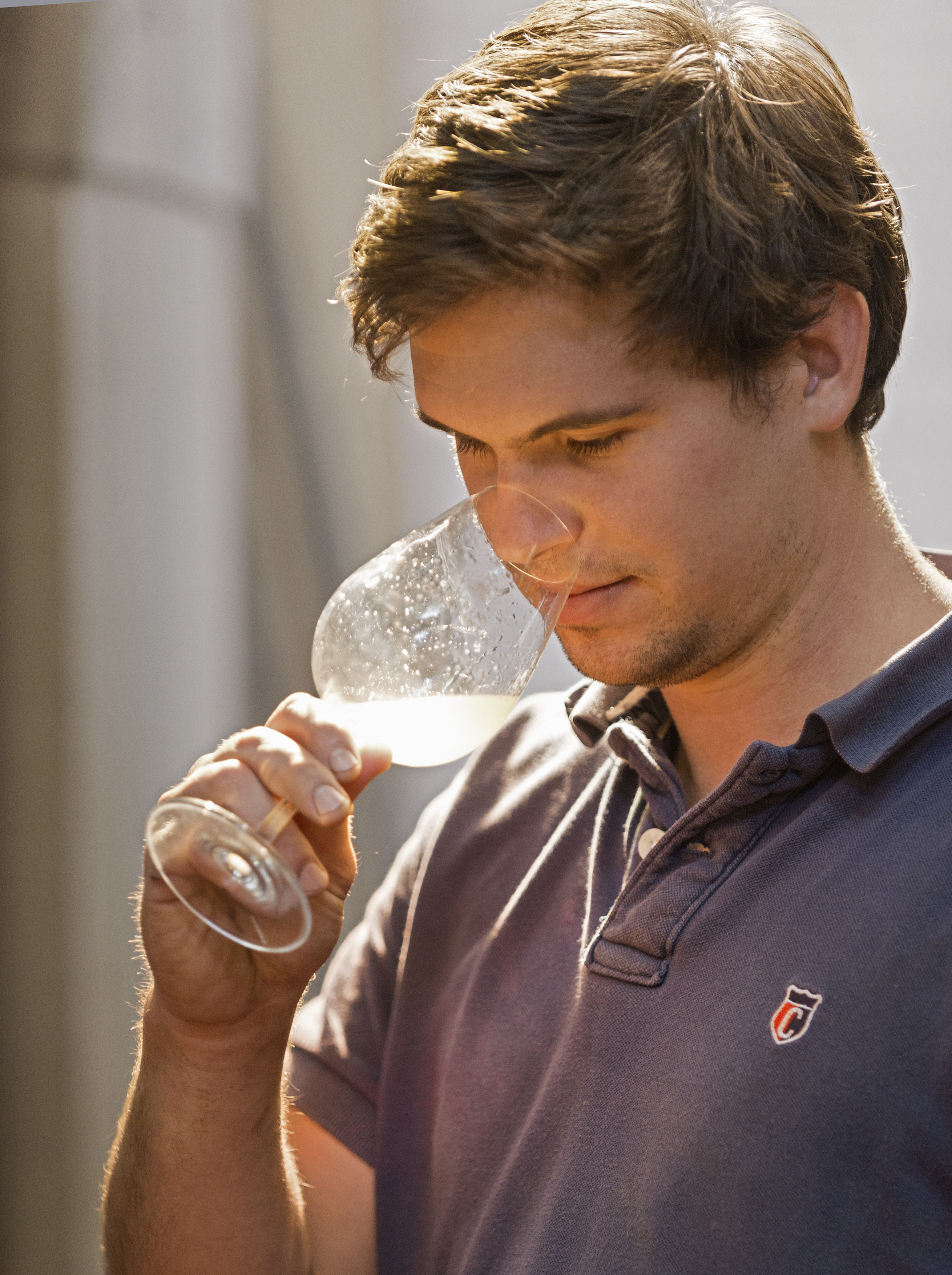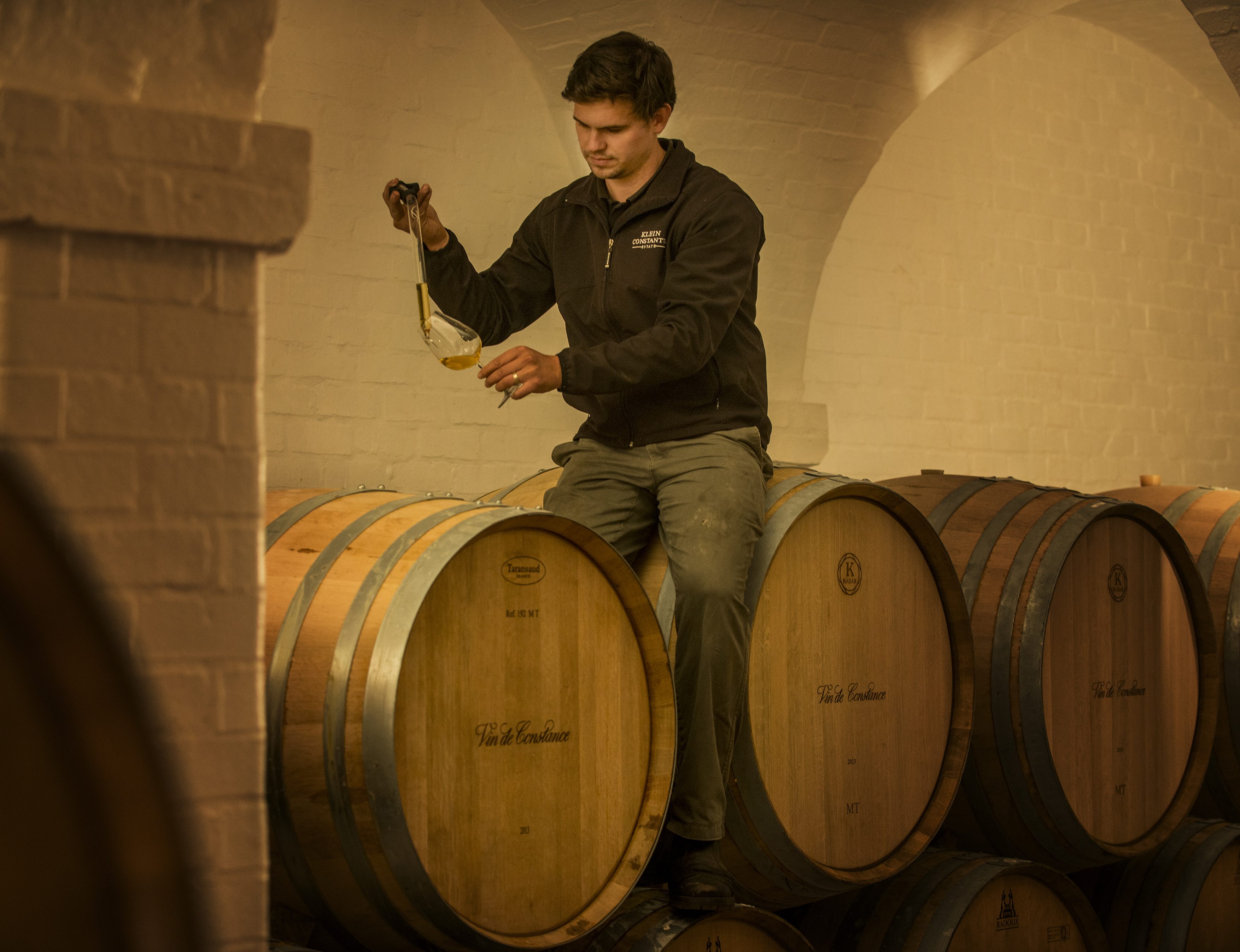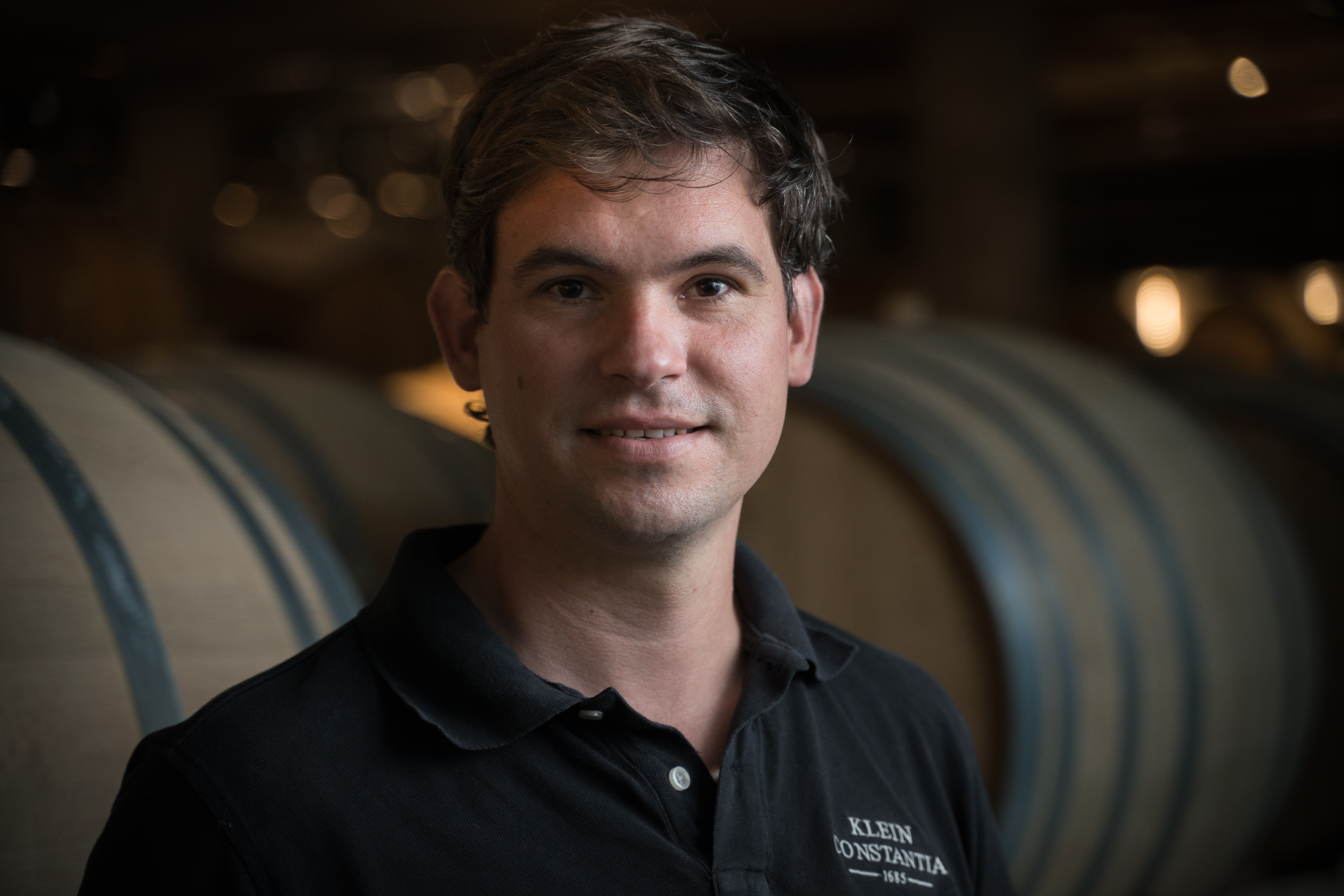SA Wine Trailblazer: Matthew Day
Matthew Day is clearly at home on a farm. At the wheel of a drop-top safari vehicle Klein Constantia’s winemaker is taking me on a slow drive around the estate. The ascents gradually increasing, the views of the Constantia Valley and False Bay unrolling in summer splendour before us. We drive past snuffling pigs and errant chickens. Klein Constantia is said to be one of the most beautiful vineyards in the world, it’s easy to see why, the natural beauty of the estate has been left unencumbered, with vines bordered by fynbos and rocky mountain deposits, and the occasional copse of trees.
Over half the property has been planted to sauvignon blanc, with more blocks being planned for the future. While the estate is well-known for famed sweet wine, Vin de Constance, sauvignon is its modern story.

There are seven sauvignons in the range. Says Day: “They have been made with the intention of learning from our terroir, to study all the different variables of altitudes, aspects and soils.”
Before landing here in the Cape, Day was already used to the pastoral life. He grew up on a farm in a small town in the south of Johannesburg.
“There was a bit of everything,” shares Day. “We had chickens, turkeys, sheep, horses, cows and vegetables with the idea that whatever we needed would come from the farm. “I loved having fresh, warm milk every morning for breakfast as well as newly laid eggs. My parents still live there today and are now completely off the grid.”
His grandfather also had a farm up the road from the family. “He basically taught me how to drive a tractor before I could ride a bike. This was where my passion for farming was instilled. He also had a charcoal factory, which is how I became interested in chemistry.”
His love of farming and chemistry neatly led him into a life of a winemaker. “I really wanted to find a way to put my scientific background into farming so winemaking made complete sense.”

Site-expressive sauvignon
We’re here today to taste the new 2021 Estate Sauvignon Blanc, a wine that Day says is ‘40 years in the making’. In the cool confines of the restored Manor House, acts of revelry painted on the stone walls, we taste wines that represent the sauvignon journey, with three wines by the farm’s three winemakers, Ross Gower (1997), Adam Mason (2010) and finally Day’s 2019, before the current vintage release, the 2021.
Fresh and vivid the older wines with their rich-fruited sauvignon typicity illustrate just how very well suited the property is to the production of world class sauvignon.
Day is taking things even further than his predecessors. It begins in the vineyard with an obsessive picking regime, taking place over six weeks with several passes through the different sites. The parcels are all kept separate, made possible by a custom built tank farm in the cellar, which is able to hold over 40 different components. Then, for the Estate, the painstaking blending process begins, fastidiously blending different blocks to achieve the ultimate expression of Klein Constantia. The elegant Estate 2021 was made from 42 different parcels.
In order to further showcase site Day says they ‘have also gone completely back to the basics’. Working hyper-oxidatively with the juice at crush, reduced sulphur usage and wild fermentation.
Day believes firmly in site-expressive sauvignon blanc, eschewing the fruit-bomb caricature style we see crowding on supermarket shelves.
“We are not trying to make anything other than Klein Constantia sauvignon blanc. Not Sancerre, not New Zealand. And rather than manipulating what we get from the vineyard to emulate something we are not, we work hard to capture what we get from our site, from our vineyard. We respect it; we understand it and we celebrate it.”
He says this approach was inspired by a harvest in Sancerre at Domaine Pascal Jolivet.
“As a young winemaker I believed that great wines were made by amazing winemakers who create magic in the cellar. During this trip however my eyes were opened. Winemaker Jean Luc Soty took me to six different vineyards in Sancerre, each of which had their own unique terroir, with completely different soil types. We tasted the grapes after which we went back to the cellar and tasted six different wines from each individual vineyard. The wines had that sense of place of the various sites. I realised then that there is a lot more to wine than the way its made and who has made it.”
Before settling at Klein Constantia, numerous other stints abroad further fuelled his passion. He’s worked harvests at Chateau Belefont-Belcier in St Emilion, Elderton Estate in the Barossa Valley and Dancing Hares Estate in the Napa Valley. Day says along with the time in Sancerre, another big impression was made on him in Napa.
“There I worked for Andy Erickson, who is a pure genius when it comes to micro-vinification and creating cult wines.”
Back on home soil in 2008, he took on the role of assistant winemaker at Klein Constantia under then winemaker Adam Mason. “Adam was incredible, I couldn’t have asked for a better mentor. He instilled in me the mantra of: “don’t over complicate things”.
In 2012 Day took over from Mason, and since then his star continues to climb. He was voted as one of The Drinks Business’s Top 30 winemakers under 40 to watch as well as being named Tim Atkin’s Young Winemaker of the Year for 2016.
He has now taken on extra responsibility of heading the winemaking at Stellenbosch property, Anwilka. “I’m excited about the new challenge. With Klein Constantia being white wine focused Anwilka is the perfect project to create a super elegant high profile red wine for the group. Our goal for Anwilka is to become as sustainable as possible and possibly biodynamic.”
Day lives on Klein Constantia with his wife, Cath and their two children, Rose (5) and 16-month-old John. Just like their dad, they’re growing up on a farm.

- Blog by Malu Lambert